A Traveler’s Tale: Baku, Azerbaijan and the Shores of the Caspian Sea
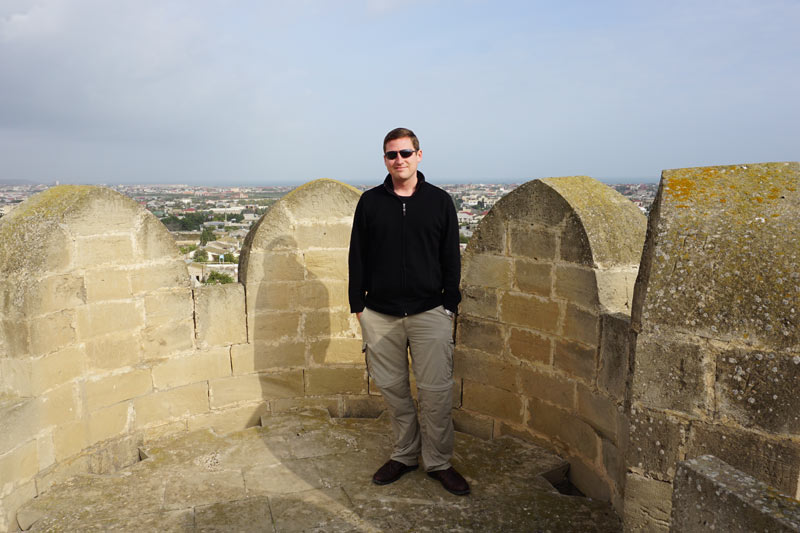
Having spent years living and working in Central Asia, I’ve flown over the Caspian Sea en route back to the USA countless times. On long hauls I’m a window-seat flyer; so when the sea was not obscured by clouds or the opaqueness of nighttime, I would look out and marvel at its vastness.
While technically a saline lake, the world’s largest, the Caspian is simply enormous and really lives up to the scale of a sea. Even from 39,000 feet, when you are in the middle of the Caspian, you can’t make out the shoreline in any direction.
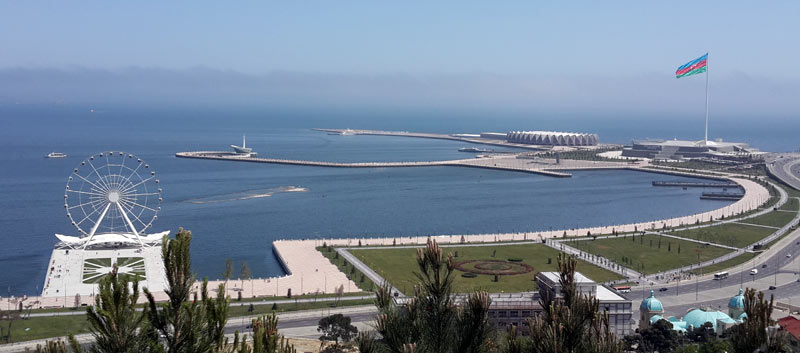
The Caspian has been an emotional landmark for me. Passing over it meant I was returning to Central Asia, my second home, for another extended stay away from my friends and family back in my first home, the U.S., or that I was leaving that second home for some rest and recreation elsewhere. Going either direction was always bittersweet, and the Caspian always felt like the demarcation between the two.
Despite having seen it from the air so many times, I had never actually been down on the ground anywhere near the body of water. So last year when MIR presented me with the opportunity to travel between Yerevan, Armenia, and Baku, Azerbaijan, I jumped on the offer.
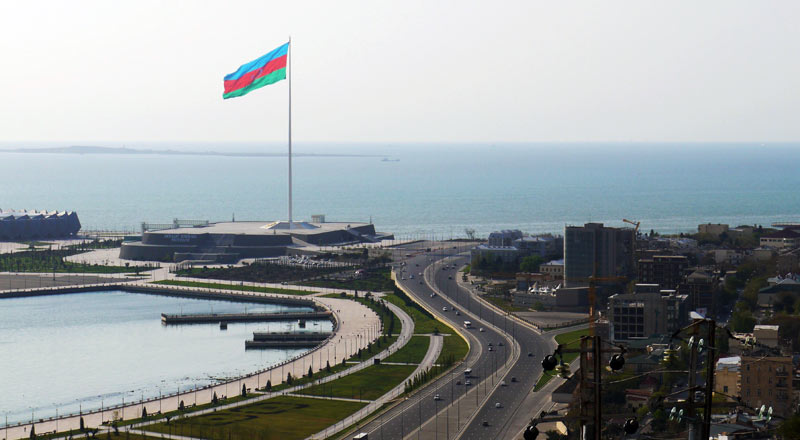
The highlight for me, though, was my final destination: Baku, the capital of Azerbaijan, perched on the southern shore of a peninsula jutting out into the center of the Caspian.
Azerbaijan and its People
Azerbaijan is located where the Caucasus Mountains meet the Caspian Sea, with Central Asia to the east, Russia to the north, Iran to the south, and Georgia and Armenia to the west. The national language, Azeri, is closely related to and often mutually intelligible with the Turkish spoken in Turkey.
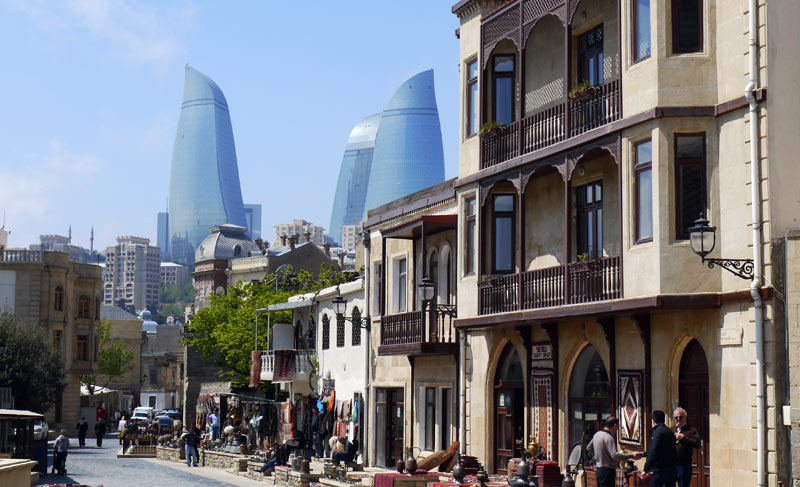
Most Azeris adhere to the same Shia Muslim faith as their neighbors to the south, in Iran. This is in contrast to the Sunni branch of Islam that predominates in nearby Turkey, the Middle East, and Central Asia; and the Orthodox Christianity practiced in Russia, Georgia, and Armenia.
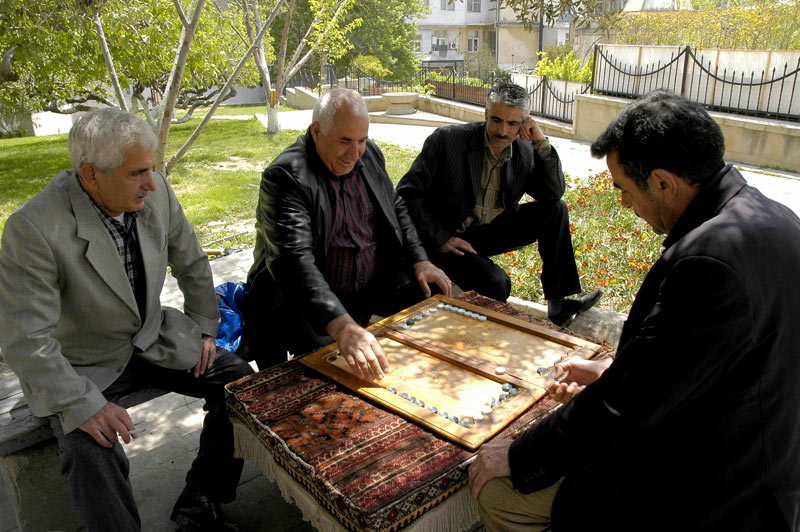
The country was under Russian and Soviet rule for much of its recent history. Even today most Azeris speak at least some Russian, and a substantial Russian minority still lives there. But the Azeri people’s deep historical roots lie to the east, on the steppes of Central Asia and Mongolia, the original homeland of the Turkic clans.
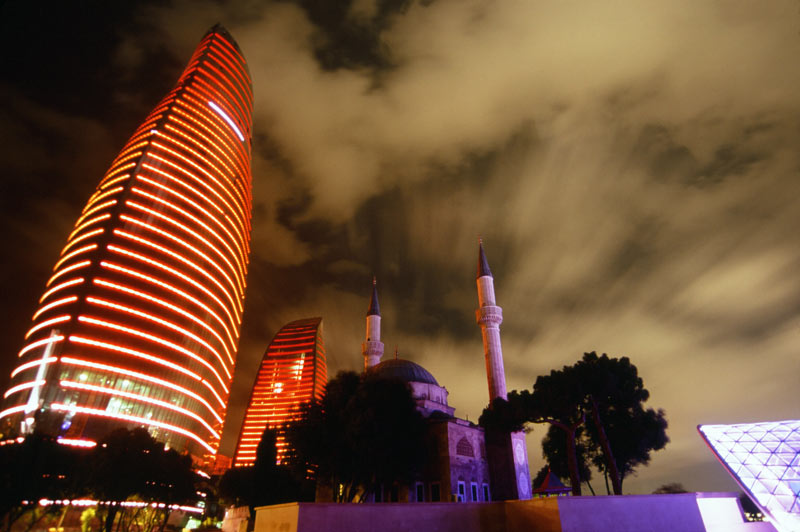
I arrived in Baku not totally knowing what to expect. Would it be like the Central Asia I was so familiar with? Like Georgia and Armenia, Iran, or Turkey? Would the Russian influence be as obvious as in other parts of the former Soviet Union? Would there be any readily apparent ties to Iran?
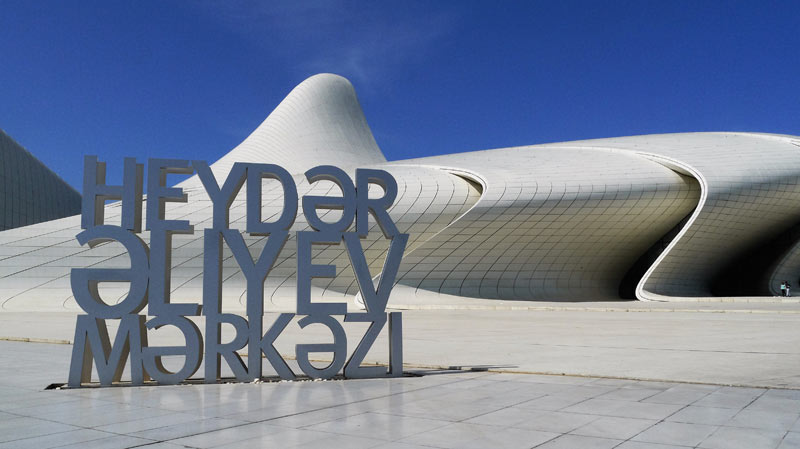
The answer to all of the above was yes. I felt a little silly spending so much time comparing what I was experiencing with other places I had been before, but honestly it was hard not to do so in Azerbaijan. Threads of the familiar were everywhere.
Threads of the Familiar
I heard Russian and Azeri on every street corner, the latter sounding just like Turkish to my ears. I was in the country right after the mourning holiday of Ashura, and I noticed black banners and flags adorning many mosques. The foods I ate had names familiar to me from Persian and Central Asian languages, but tasted much like the cuisine I’d had in Georgia and Armenia.
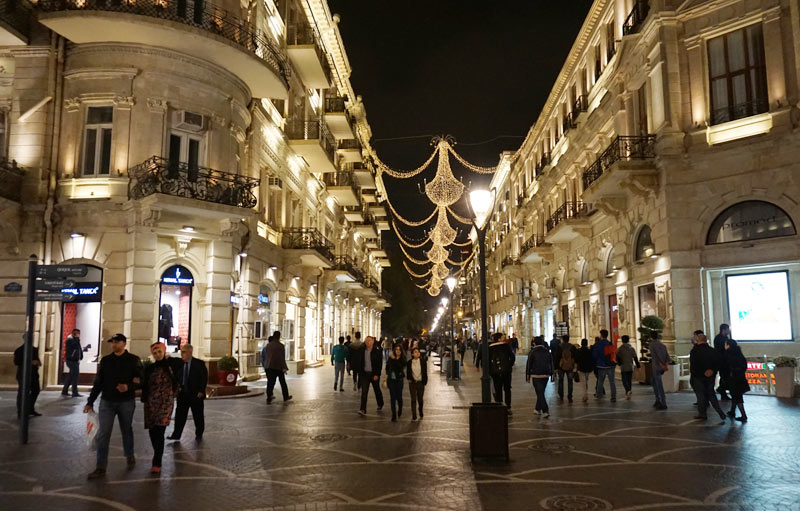
The streets and urban planning, especially in the outskirts of the city, felt very Soviet. The presence of substantial sums of petro-dollars was also easy to pick up on. The city was booming, and felt very cosmopolitan.
The Highlight of My Trip: Beautiful Baku
Baku wraps around a semicircular bay, broadly oriented towards the south, with the downtown and old town areas largely situated in the western half of the semicircle on a hill sloping steeply down towards the sea.
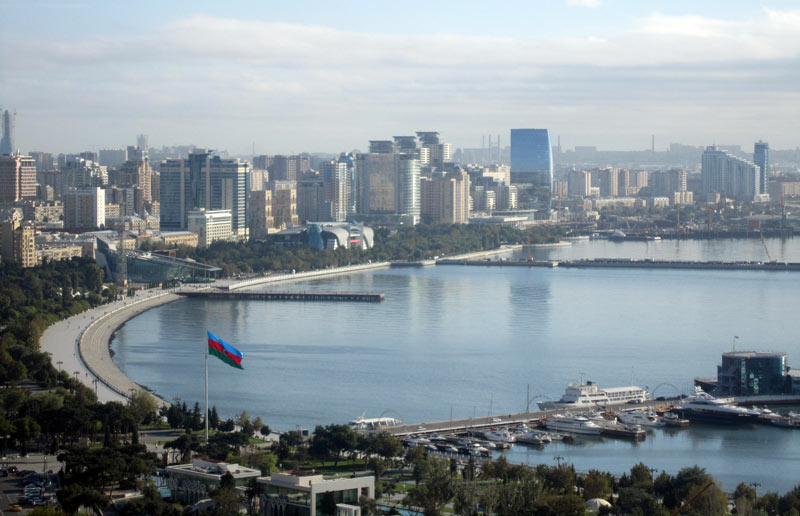
Martyrs’ Lane and Spectacular Views
My exploration started at Martyrs’ Lane – a solemn stretch of walkways and gardens dedicated to those killed in the Nagorno-Karabakh War with Armenia, and during the turmoil Azerbaijan experienced immediately prior to the dissolution of the Soviet Union. The views of the city and the Caspian are spectacular – this makes for a good first stop for orientation purposes.
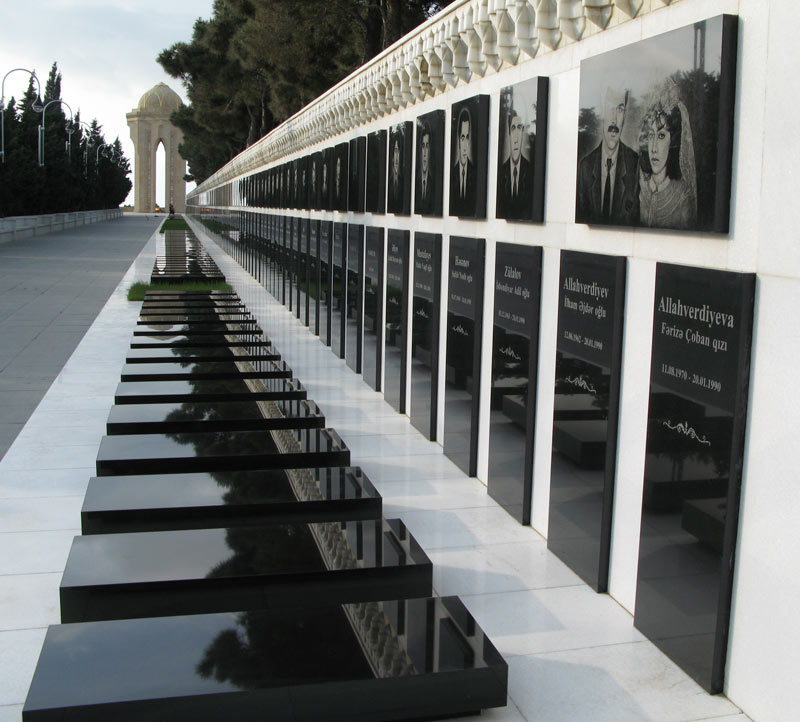
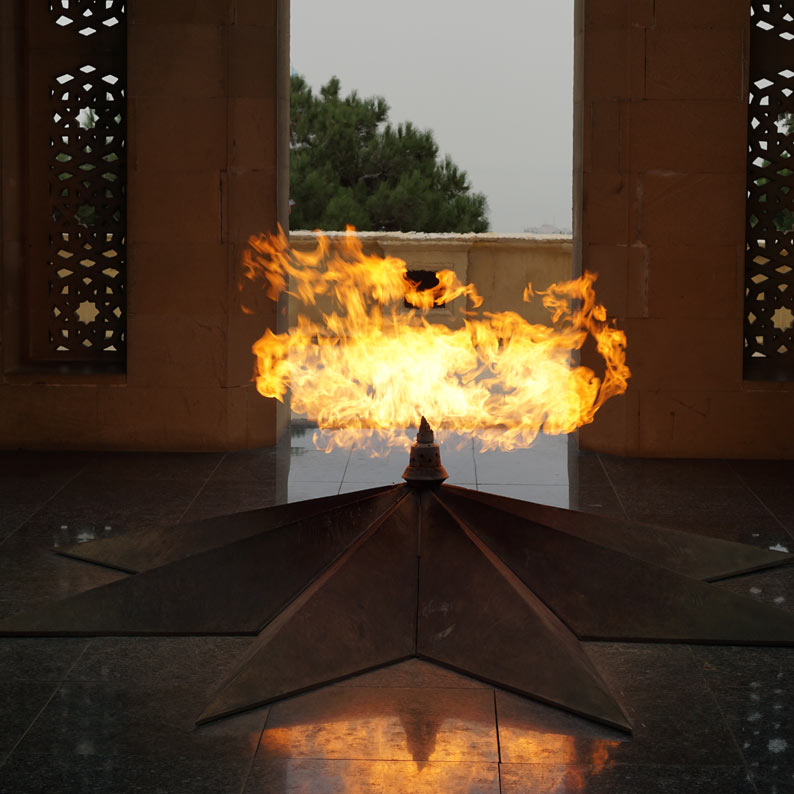
The Flame Towers
I walked down past the Flame Towers – a triplet of flame-shaped modern skyscrapers designed to evoke the fires of Zoroastrianism, the pre-Islamic religion of the area.

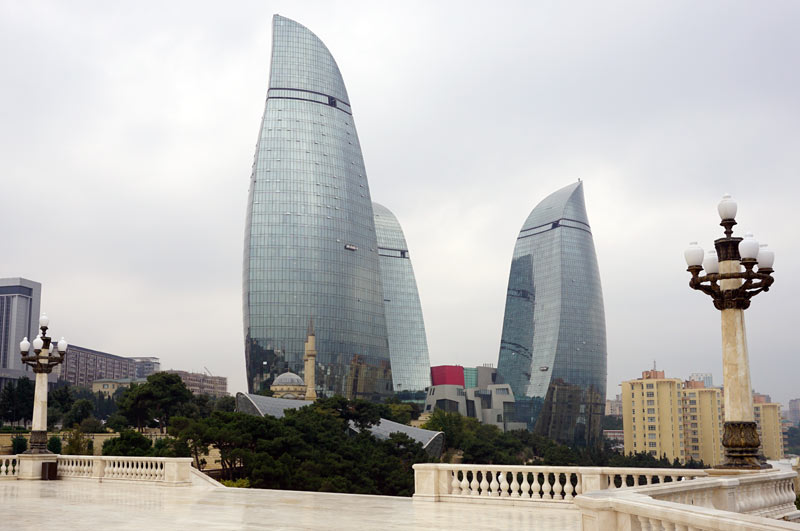
Heart of the City
The heart of the city is its old town, the icharishahar. I spent several hours exploring the maze of narrow alleys, poking my head into carpet shops, handicraft stalls, little museums and monuments, and occasionally glimpsing the inside of someone’s courtyard or apartment through an open door. I visited the city’s most famous attraction, the 15th century Palace of the Shirvanshahs, a museum and architectural monument on UNESCO’s World Heritage List.
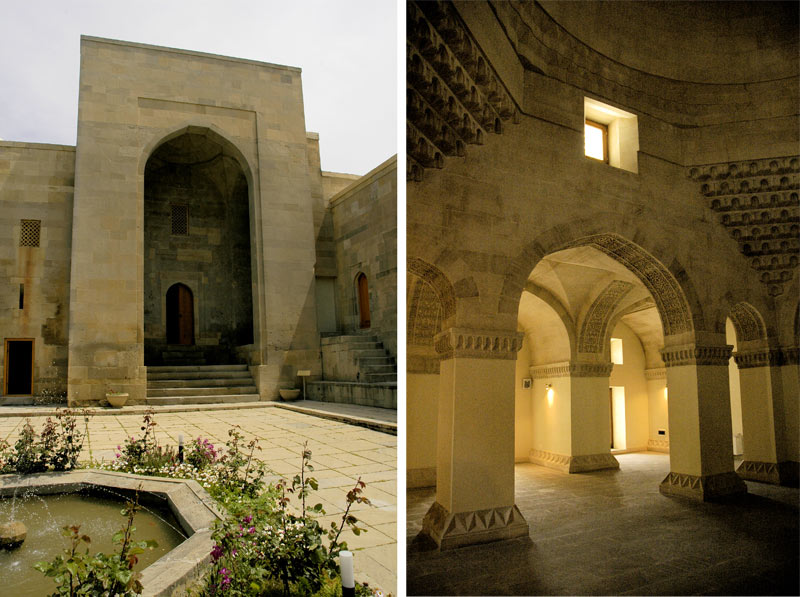
I ended my first day in Baku with an evening stroll from the beautifully lit pedestrianized shopping streets around Fountain Square to the Maiden Tower monument just across from the Caspian. Dinner was a traditional Azerbaijani rice pilaf made with sour cherries, served in the courtyard of an old Azeri home that has been converted into a restaurant.
(click on photo to view larger version)
Less Visited Attractions
Having seen the main tourist sites in the city on my first day, I spent my subsequent three days in the city seeing less visited attractions, and getting out of town.
Gobustan
The petroglyphs at Gobustan are UNESCO-listed and the trails yield great views of the countryside.
(click on photo to view larger version)
The Heydar Aliyev Center
The Heydar Aliyev Center is an open, light-filled space that hosts rotating exhibits and events. A visit is worthwhile just to see the interior of the unique building, especially if one of the exhibits is of interest.
(click on photo to view larger version)
National Museum of Azerbaijani Carpets
The Carpet Museum is in a new building, shaped like an immense rolled up carpet, on the shore of the Caspian. The carpets inside are spectacular, but the highlight for me was watching the weavers stationed throughout at work. You can hear the sounds of their shuttles clicking back and forth all through the museum.
(click on photo to view larger version)
Locally Grown Fruits at the Market
I visited the central green market with a guide one afternoon to get a feel for the vegetables and fruits available. The pomegranates, melons, walnuts, and other produce were all beautiful, but one fruit in particular caught my eye.

It was the pineapple guava, or feijoa. I had seen this fruit before in specialty stores in the U.S., but I had always thought it was grown and eaten mostly in tropical climates, in South America. I was surprised to see stall after stall of them in Azerbaijan, on the Caspian, in the former Soviet Union, of all places.
My guide explained that the fruit had been introduced decades ago and that they were now common and quite popular in Azerbaijan. I bought a kilo to eat over the next few days.
Absheron Peninsula: Fire Temples, Watchtowers and Oil
My last full day in town I visited the Absheron Peninsula. Absheron means “place of salty waters” in Persian, and, sure enough, it is low, salty, and dotted with reedy marshlands. Interesting stops along the way include the Ateshgah Fire Temple, with Hindu and Zoroastrian roots, and Yanar Dag (“burning mountain”), a natural gas fire emerging from a hillside.
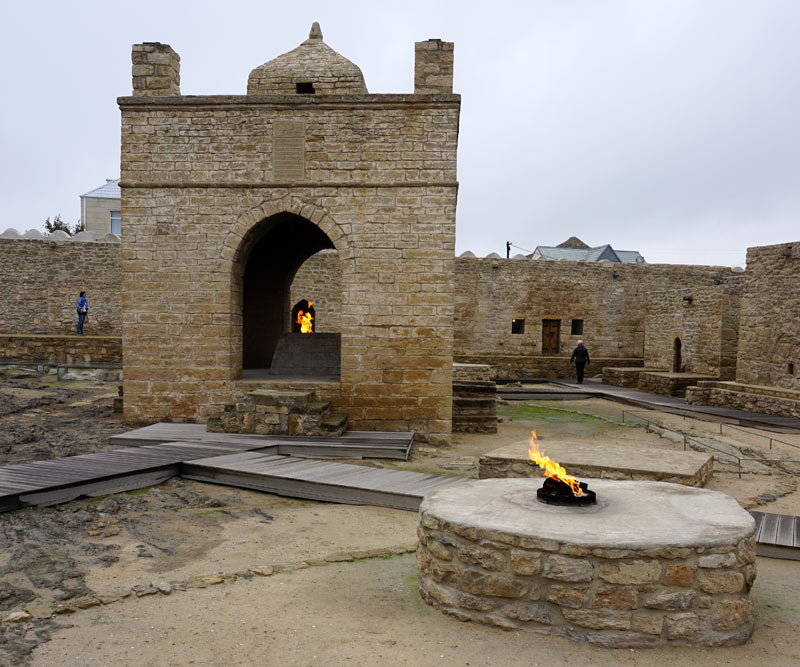
My favorites, though, were two old watchtowers, Mardakan and Ramana. The Ramana tower overlooks a bleak, post-apocalyptic field of oil derricks, not beautiful by any stretch, but transfixing.
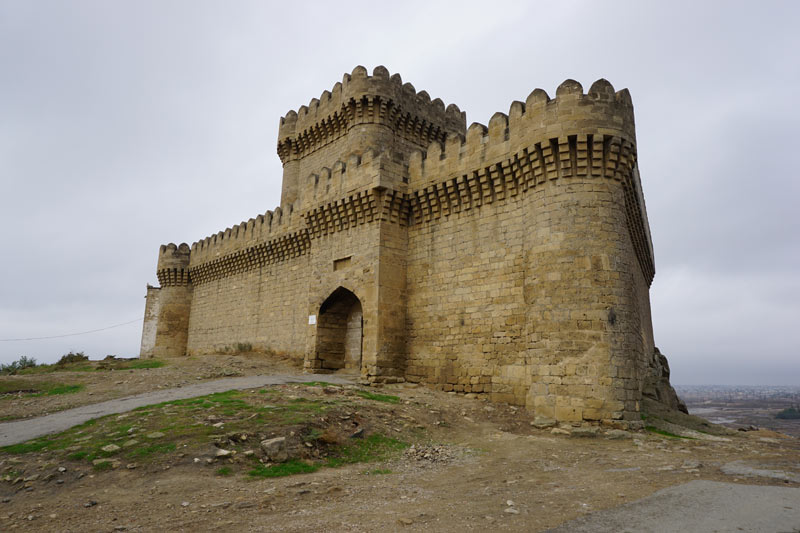
For those not discouraged by steep, dark stairs, a fear of heights, or a lack of any safety precautions whatsoever, the climb to the top of the Mardakan tower yields gorgeous views of the surrounding village, countryside, and Caspian.
Room with a View
A last highlight for me was the hotel I was based out of. I was very fortunate to be able to spend my nights in the city at the Four Seasons Baku, in a balcony room overlooking the old town.
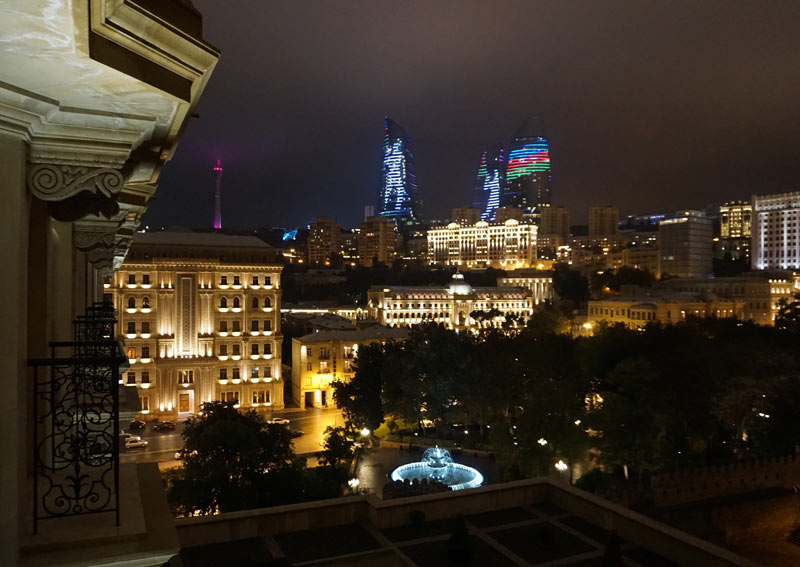
This is not a budget hotel – it is quite expensive, in fact, even by the oil economy standards of Azerbaijan. If one wants luxury though, it is the place to stay. Everything felt well designed, luxurious, and extremely comfortable, from the palatial sauna and swimming pool areas, to the plush room furnishings, to the enormous breakfast buffet spread each morning. Watching the sun set over the old town from my balcony each evening is a sight I will not soon forget.
(click on photo to view larger version)
The Caspian Up Close
Of course, the thing I had anticipated the most before arriving in Baku was seeing the Caspian Sea up close for the first time. Every day I found time to stroll the pedestrian walkway, called the promenade, that follows the shore along the semicircular bay around which the city is built.
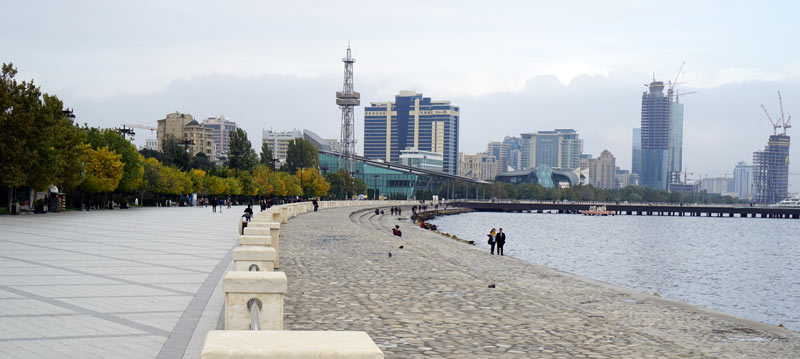
A park-like space filled with grass and trees separates the road from the walkway, and in the fall, when I was there, the changing leaves are beautiful. My most vivid memory from the whole trip is of one particular rainy, windy afternoon, on which I spent over an hour sitting on a bench looking out over the sea, thinking of all the times I’d seen the same water from so high above, on my way to or from home.

Travel to Azerbaijan with MIR
I traveled through the South Caucasus on a portion of the Golden Eagle Caspian Odyssey rail journey by private train. The whole trip was fantastic, and I can’t speak highly enough about the comfort and class of a rail journey by private train with Golden Eagle.
You can also experience Baku, Azerbaijan, and the Caspian on these small group tours:
Or opt to travel on your dates and at your pace on MIR’s Essential Caucasus, Essential Azerbaijan, or on a custom private itinerary.
MIR has 30 years travel experience to the South Caucasus, with on-the-ground support and tour managers that clients rave about. MIR’s full service, dedication, commitment to quality, and destination expertise have twice earned us a place on National Geographic Adventure’s list of “Best Adventure Travel Companies on Earth.”





































